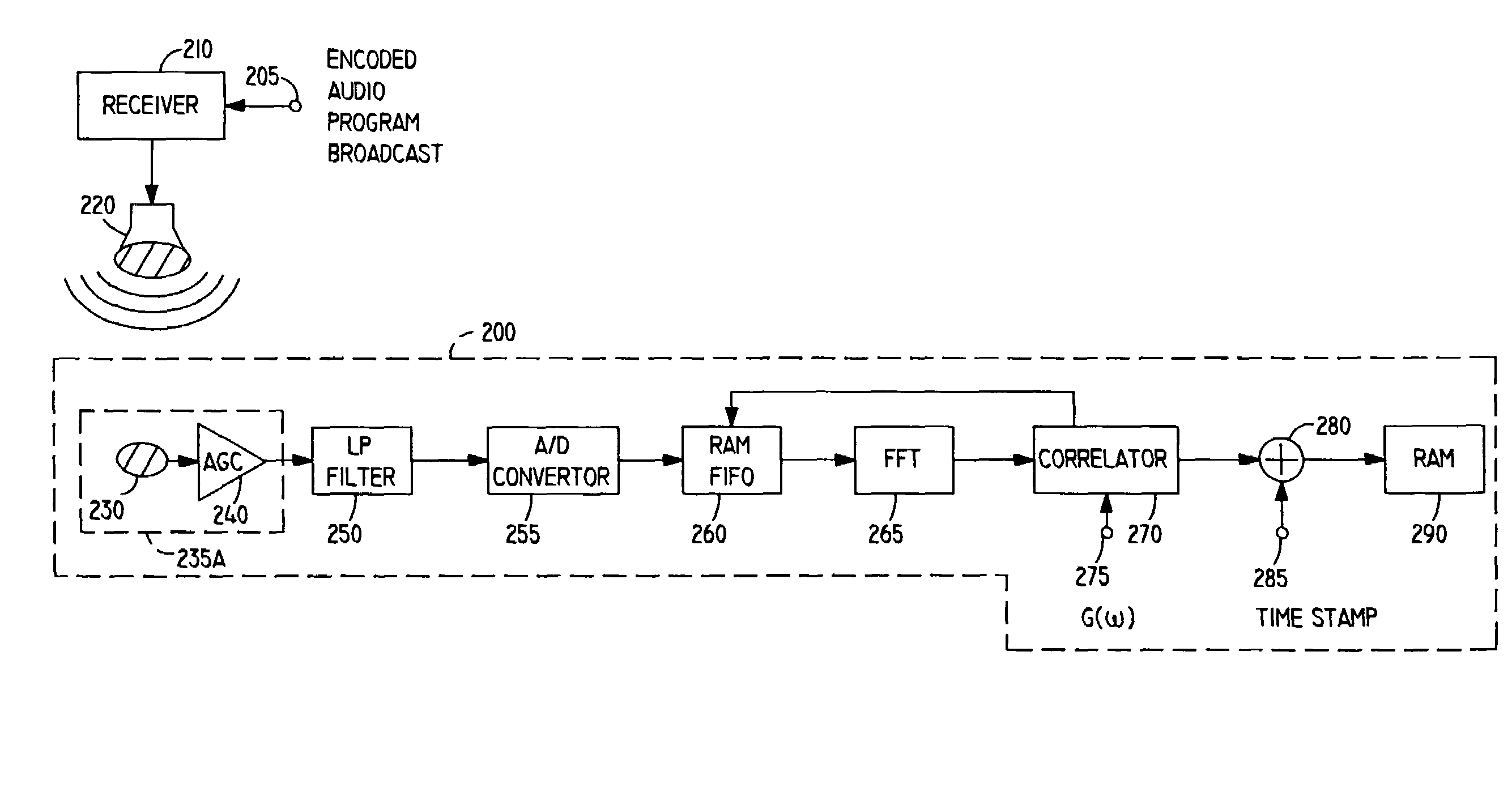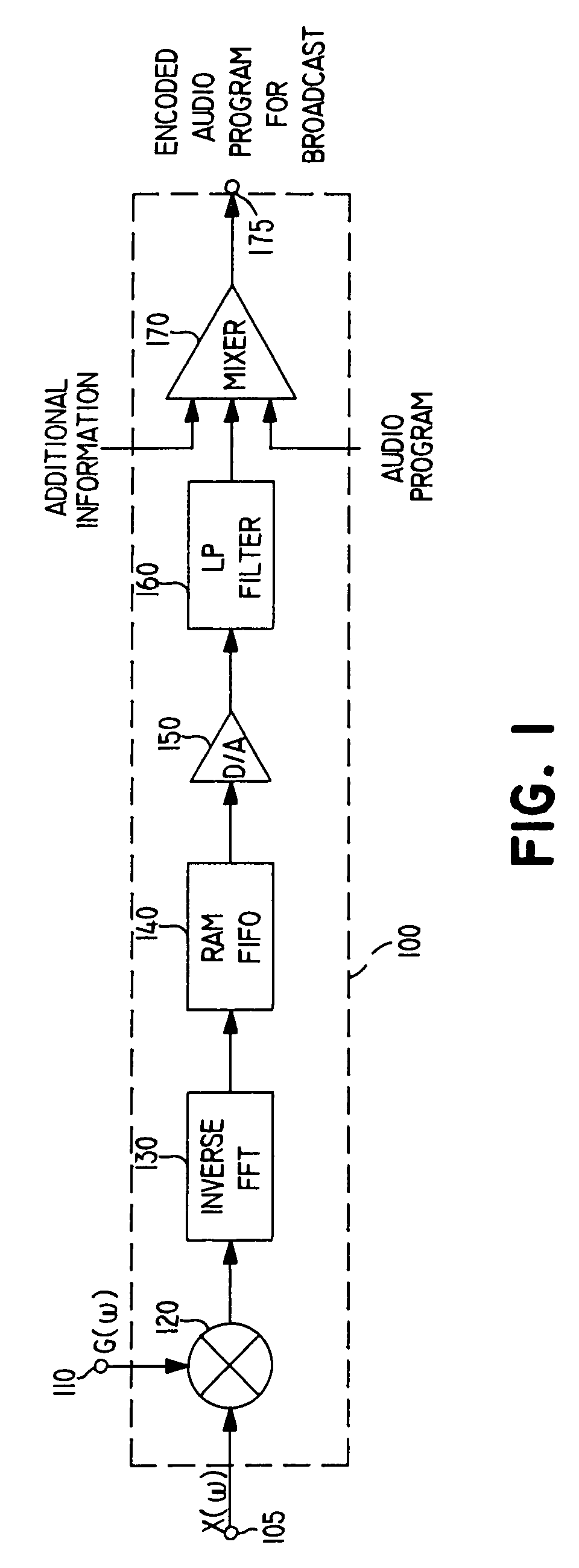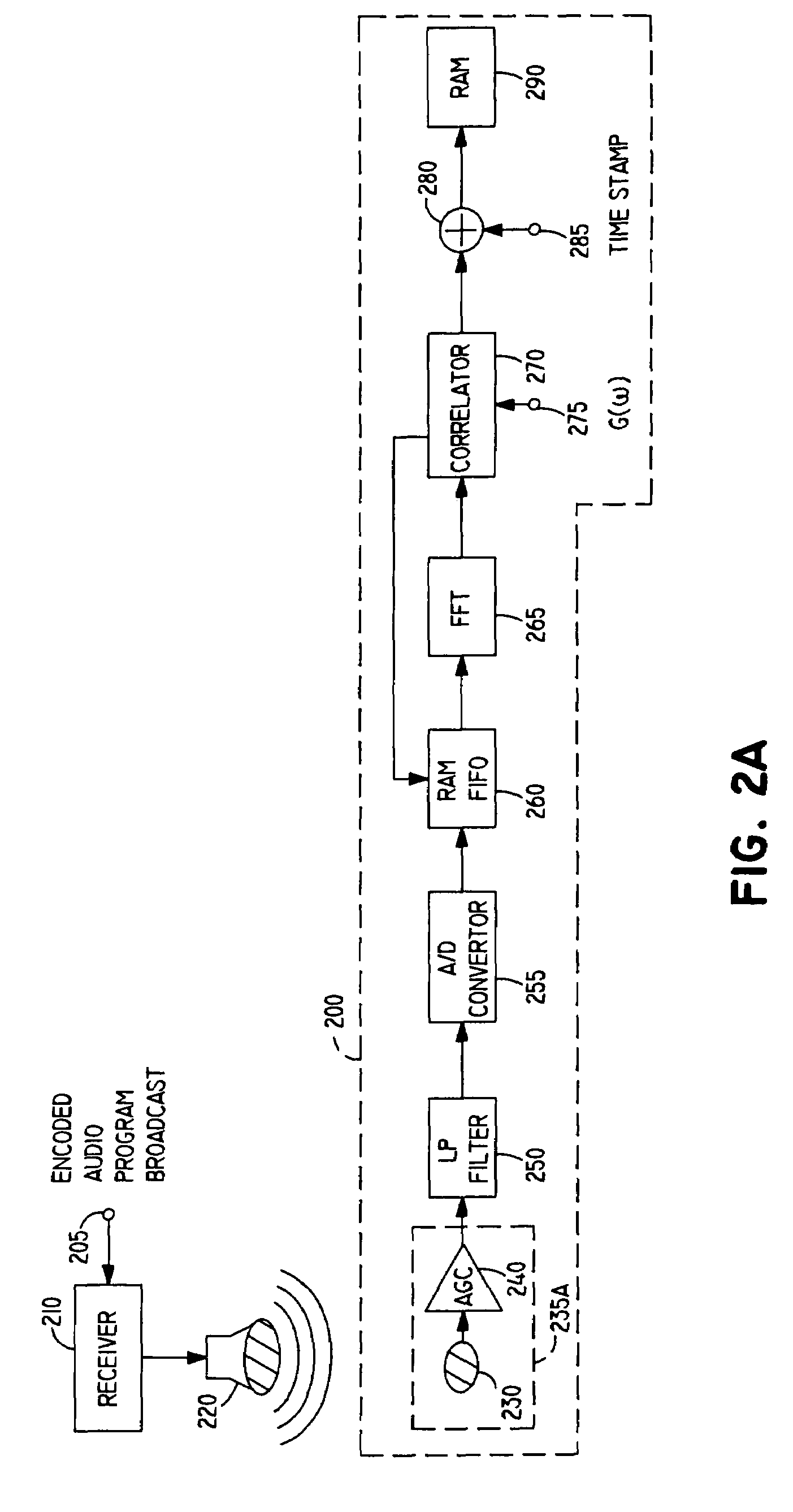Method and apparatus for encoding/decoding broadcast or recorded segments and monitoring audience exposure thereto
a technology for broadcast or recorded segments and audience exposure, applied in the field of encoding and decoding broadcast or recorded segments, can solve the problems of inconvenient monitoring of audience exposure, limited use of each method, and inability to fully report media experiences in respondents' diaries
- Summary
- Abstract
- Description
- Claims
- Application Information
AI Technical Summary
Problems solved by technology
Method used
Image
Examples
Embodiment Construction
[0041]In certain advantageous embodiments, the present invention adds identifying information to the audio portion of a broadcast segment before the segment is broadcast using a spread spectrum technique selected from among several alternatives, and includes a passive monitoring device which operates without human action to sense the identifying information in the broadcast segment and record it. The terms “meter” and “metering device” are sometimes used herein to refer to devices such as passive broadcast monitoring devices. At periodic intervals, the recorded information in each meter is uploaded to a centralized data processing facility for permanent storage.
[0042]In such embodiments, the spread spectrum techniques employed typically encode identifying information having a relatively low data rate and formed into an identification signal having a narrow bandwidth, referred to herein as X(w), x(t) or x(n). As used herein, the term “signal” includes both an electrical signal and a ...
PUM
 Login to View More
Login to View More Abstract
Description
Claims
Application Information
 Login to View More
Login to View More - R&D
- Intellectual Property
- Life Sciences
- Materials
- Tech Scout
- Unparalleled Data Quality
- Higher Quality Content
- 60% Fewer Hallucinations
Browse by: Latest US Patents, China's latest patents, Technical Efficacy Thesaurus, Application Domain, Technology Topic, Popular Technical Reports.
© 2025 PatSnap. All rights reserved.Legal|Privacy policy|Modern Slavery Act Transparency Statement|Sitemap|About US| Contact US: help@patsnap.com



